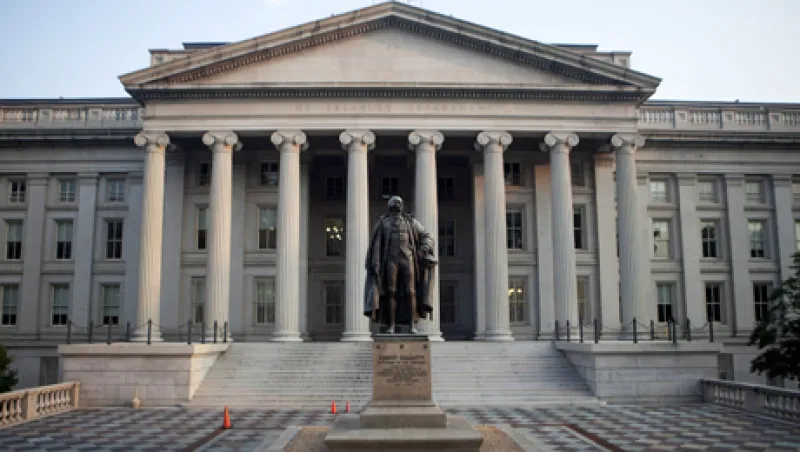Investors in the U.S. Treasury market are behaving as if the term “sovereign debt crisis” had never entered the financial lexicon.
The fear that a double-dip recession will imperil sovereign creditworthiness may be a theme for institutional investors in peripheral euro zone sovereign debt, but not on the other side of the Atlantic — not yet, at least.
Treasury prices are currently responding to any new sign that the U.S. economy will fall off the fiscal cliff and into double-dip recession by rising rather than falling. They are following the conventional historical pattern where a slump prompts a flight to the safe haven of U.S. government debt.
The fiscal cliff is the name given to the risk that the president and Congress will fail to agree on an extension of tax cuts and spending increases due to run out in January, thus imposing an abrupt fiscal tightening that would shave 3.9 percentage points off U.S. gross domestic product, according to the Congressional Budget Office.
BlackRock, the world’s biggest asset manager, sees a “dangerous disconnect” between markets’ benign expectations of a resolution of the fiscal cliff imbroglio and what it sees as the very real possibility of no agreement until a deal is finally hammered out late next year — plunging the U.S. down the fiscal cliff for many months. The fiscal precipice would, it says, be good for Treasuries and bad for equities.
David Kelly, New York–based chief global strategist for J.P. Morgan Funds, the bank’s mutual fund arm, thinks, however, that the Republicans and Democrats will reach an agreement on the fiscal cliff before the January deadline — imposing in its place a moderate fiscal tightening mild enough to save the economy from a return to recession. This will, he thinks, depress Treasury prices, since “if the U.S. economy can avoid the uncertainty of the fiscal cliff, that will tend to push money away from Treasuries.”
At what point will this formula — recession plus uncertainty equals good news for Treasuries, fast growth plus certainty equals bad news — come to an end? At what point, in other words, will Treasuries start behaving like peripheral markets in the euro zone, where economic slump depresses bond prices by raising concerns over solvency? Skeptics of the U.S. government’s ability to pay back its debt have raised eyebrows at both the high overall debt and the gaping deficit. At 107 percent of GDP for this year, according to Tuesday’s predictions from the International Monetary Fund, the debt will be 13 percentage points higher than the euro zone average. Even more starkly, the 8.7 percent deficit will be more than double the euro zone average of 3.3 percent.
Kelly is not losing sleep over the creditworthiness of the U.S. government, saying, “The U.S. economy is in a better position than the euro zone economy, so the U.S. will probably maintain its safe-haven status.” Most economists expect puny growth in the euro zone next year, at best. However, Kelly thinks U.S. GDP growth could be as high as 3 to 4 percent next year if an agreement is reached that chisels a safe “fiscal ladder” into the cliff edge — a deal that allows the administration to bring down the deficit slowly without giving a sudden shock to the economy. An expansion of this magnitude would push the U.S. growth rate from its current below-trend level to a rate significantly above trend.
Kelly instead sees the primary risk to Treasury prices as coming from this potential switch to high growth, rather than the risk of continued low growth. “Because of Federal Reserve purchases, Treasury yields are way too low given the level of inflation,” he explains. The yield on 10-years was 1.66 percent in U.S. trading on Friday because of the Fed’s determination to keep them low to boost the economy. As a result, interest rates are precisely zero in real terms, since consumer price inflation is 1.7 percent.
However, Kelly says: “As growth pushes up inflation, the Fed will have to stop buying Treasuries — or even start selling them. As a result, Treasury prices could fall very rapidly.”
In other words, U.S. Treasuries are not merely sticking to the traditional "growth equals bad" model of bond price behavior; they are following a super-charged version of it — with yields exceptionally low now, but at risk of rising rapidly later. The dynamics of the bond market may have changed in the euro zone for the entire next generation; not so in the U.S.






